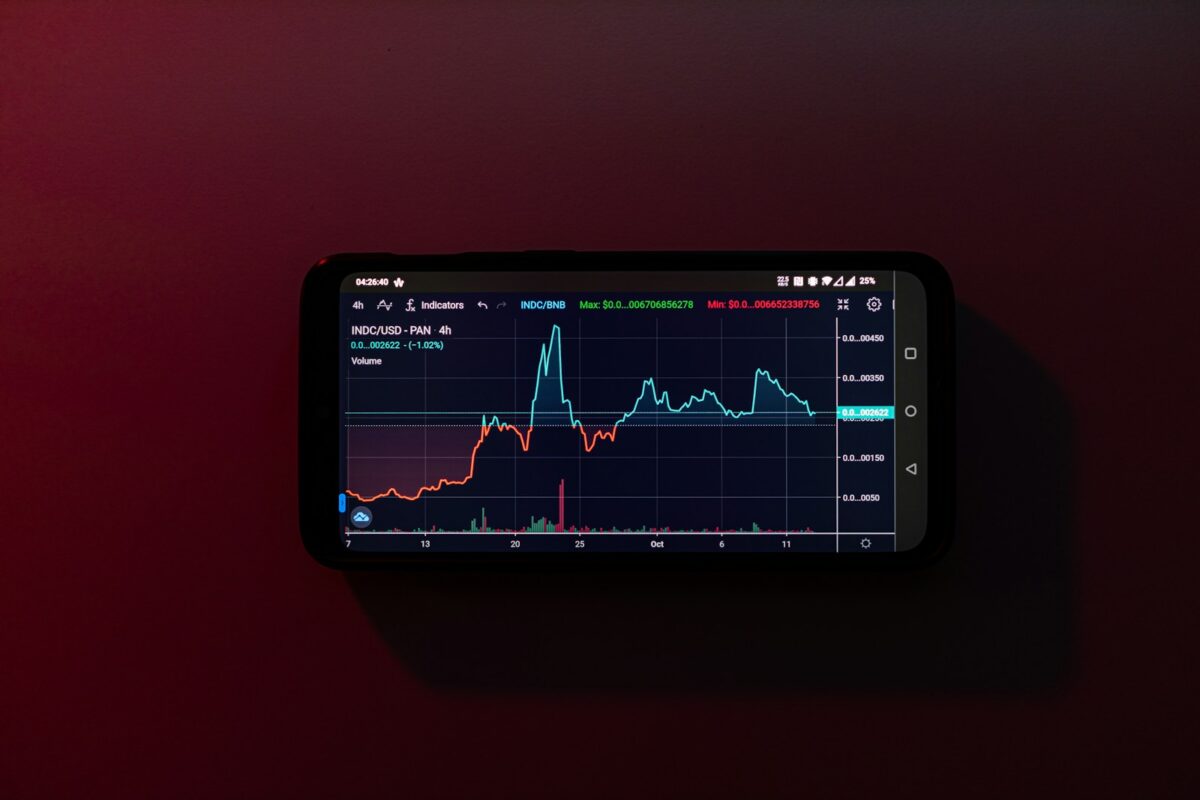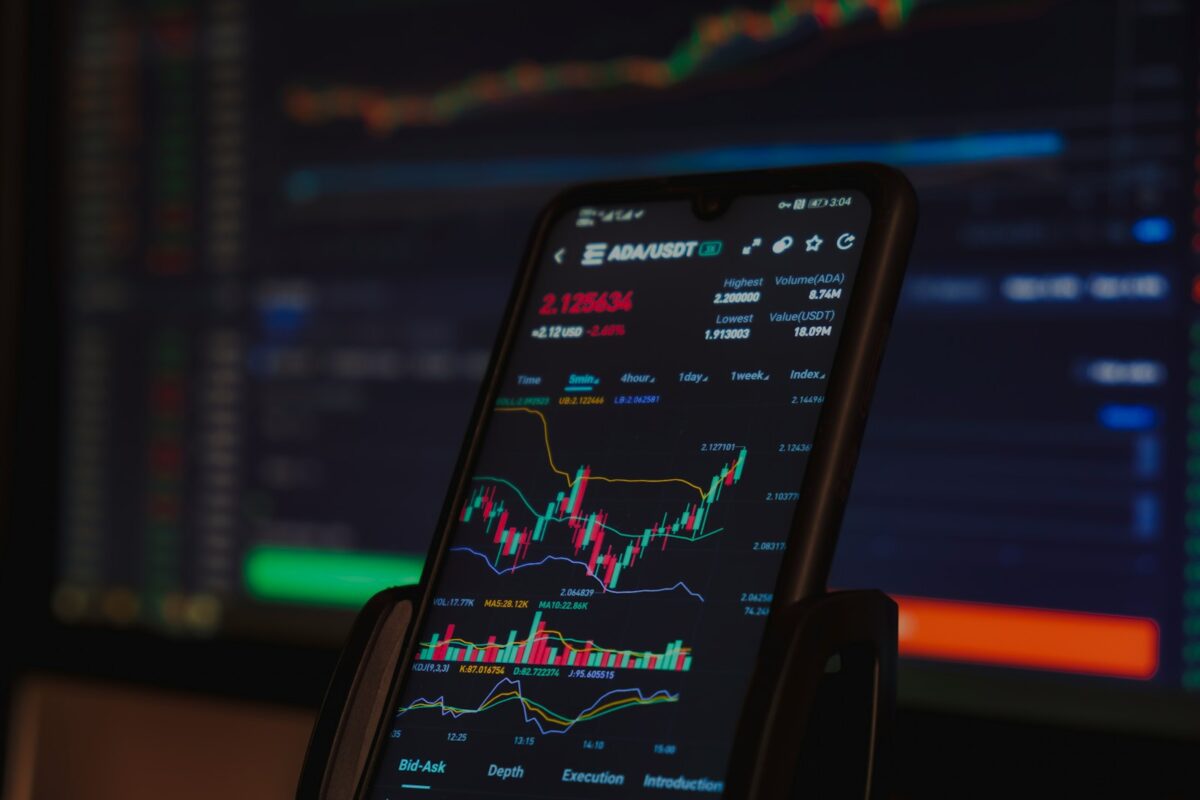
Crypto vs stocks comparison

Rapid market fluctuations offer opportunities to achieve substantial returns within hours, especially in the realm of decentralized digital assets. While traditional equity markets operate mainly during set trading hours, emerging tokenized assets trade continuously, allowing investors to react instantly to global events. This difference profoundly impacts liquidity and volatility, shaping distinct risk profiles for each asset type.
Historical data reveals that conventional market instruments tend to provide steadier but comparatively moderate yields over extended periods. Their established regulatory frameworks contribute to lower systemic risk, appealing to conservative portfolios seeking predictable growth. Conversely, newer financial vehicles demonstrate potential for outsized gains accompanied by elevated exposure to abrupt value swings and regulatory uncertainties.
An informed approach requires assessing time horizons and tolerance for price variability when selecting between these investment avenues. Short-term speculation capitalizes on rapid price movements accessible nearly 24/7 in digital tokens, whereas long-term holdings in legacy equities benefit from incremental appreciation and dividend streams. Balancing these characteristics can optimize overall portfolio resilience amid shifting economic conditions.
Crypto vs Stocks Comparison
For any investment portfolio, understanding the operational hours and market accessibility plays a pivotal role. Traditional equity exchanges operate within fixed hours, typically 9:30 AM to 4:00 PM local time on business days, which restricts trading opportunities. Conversely, cryptocurrency markets function continuously–24/7–providing constant liquidity but also introducing unique challenges regarding monitoring and risk management.
The potential return on assets in these two domains often correlates with their inherent volatility. Digital asset prices can exhibit rapid and significant fluctuations within minutes or hours, driven by factors such as technological developments or regulatory announcements. In contrast, equities generally demonstrate smoother price movements influenced by corporate earnings reports and macroeconomic data published periodically.
Risk Profiles and Volatility Dynamics
Examining the risk spectrum reveals that decentralized tokens frequently present elevated volatility compared to publicly traded shares. This characteristic results from lower market capitalization, limited liquidity in some cases, and speculative trading behaviors. For example, during high-impact events like network upgrades or security breaches, token valuations may swing dramatically within short timeframes.
Equities tend to offer more predictable risk patterns due to regulatory oversight, established business models, and historical performance data availability. However, sectors like technology stocks can still experience substantial price swings during earnings seasons or shifts in investor sentiment. Evaluating historical volatility indices alongside price charts provides quantitative insight into expected fluctuations for both asset classes.
- Digital assets: Higher intraday volatility; continuous market operation;
- Equities: Regulated trading hours; moderate volatility influenced by fundamental analysis;
- Risk management: Requires different strategies tailored to liquidity and price movement characteristics.
The comparative liquidity of assets directly impacts execution speed and slippage costs during trade operations. Cryptocurrency markets may experience thin order books outside peak trading periods or for less popular tokens, leading to increased transaction costs. Equity markets benefit from deeper pools of buyers and sellers due to institutional participation and market makers operating within defined sessions.
Investors must consider how these differences affect portfolio diversification strategies. While traditional shares provide exposure to company fundamentals across industries, digital tokens often represent novel use cases like decentralized finance or smart contract platforms. Combining both asset types demands rigorous evaluation of correlation metrics over various time horizons to optimize risk-adjusted returns effectively.
A methodical approach involves backtesting investment hypotheses under varying market conditions using historical data sets available for both environments. Utilizing technical indicators such as moving averages combined with volume analysis aids in detecting entry and exit points aligned with personal risk tolerance thresholds. Experimental simulations can reveal how differing holding periods influence cumulative returns given each asset’s unique behavior across multiple calendar years.
This detailed examination encourages investors to formulate questions around optimal allocation percentages between asset categories based on their financial goals and time commitment available for active monitoring. Which environment suits a particular behavioral style better–the continuous vigilance demanded by digital currencies or the structured routine aligned with traditional equity markets? Such inquiries propel informed decision-making supported by empirical evidence rather than conjecture alone.
Initial Investment Requirements
Determining the minimum capital necessary to enter financial markets hinges on multiple factors, including asset type and platform accessibility. Traditional equity investments often require a baseline amount, frequently dictated by brokerage policies or regulatory frameworks. For example, many brokers mandate initial deposits ranging from $500 to $2,000 to open accounts capable of purchasing shares, while fractional investing options have gradually lowered this threshold.
Conversely, decentralized digital tokens present a different paradigm. Entry points can start with significantly lower sums–sometimes as low as a few dollars–owing to the divisibility of units and 24/7 market accessibility. However, these opportunities come paired with heightened volatility and liquidity considerations that influence risk and potential return profiles.
Market Operating Hours and Accessibility
One technical distinction affecting initial investment strategy is operational hours. Conventional equity exchanges operate within fixed time windows, typically 6-8 hours per business day. This restricts immediate reaction capability to global economic events but provides structured periods for analysis and execution. Such constraints may reduce impulsive trading but also limit flexibility in urgent market situations.
In contrast, blockchain-based assets trade continuously without centralized intermediaries or closing times. This constant availability demands investors maintain heightened vigilance regarding price swings caused by round-the-clock global participation. The ability to initiate trades instantaneously lowers barriers for smaller amounts but necessitates robust risk management techniques due to intrinsic volatility.
Capital Allocation Relative to Risk and Return
The relationship between initial capital outlay and expected return varies substantially across asset classes. Conventional securities often exhibit more stable price movements coupled with predictable dividend yields or earnings growth trajectories. These characteristics allow investors to align their principal deployment with moderate risk tolerance levels while targeting incremental returns over longer horizons.
By contrast, emerging blockchain tokens demonstrate pronounced price fluctuations driven by speculative demand, technological developments, or regulatory newsflow. Initial investments in such instruments should be calibrated carefully against individual risk appetite since sharp gains may coexist with rapid losses. Employing portfolio diversification or position sizing strategies becomes critical when committing funds in high-volatility environments.
Minimum Purchase Units and Transaction Costs
A practical consideration involves understanding minimum lot sizes imposed by trading platforms or exchanges. Stock markets traditionally enforce standard share quantities as purchase units; for instance, certain blue-chip equities require buying whole shares at fixed prices which can elevate entry costs beyond casual investor reach.
Alternatively, tokenized assets provide fractional ownership down to minuscule decimals (e.g., one-millionth of a coin), enabling micro-investments unfeasible in traditional frameworks. Nevertheless, transaction fees associated with blockchain networks–such as gas costs on Ethereum–may disproportionately impact small purchases unless optimized through timing or layer-two solutions.
Verification Procedures and Account Setup Complexity
KYC (Know Your Customer) protocols represent another barrier influencing initial investment readiness. Conventional brokerages implement rigorous identity verification steps that can take several hours up to days before permitting fund transfers or trades, potentially delaying market entry after capital allocation decisions.
The decentralized asset ecosystem typically offers streamlined onboarding via wallet creation without extensive personal data submission; however, this ease introduces counterparty risk concerns and requires users to maintain custody responsibility securely from the outset. Balancing convenience against security implications is vital when determining starting investment commitments.
Empirical Case Study: Comparing Entry Barriers in Practice
This comparative analysis underscores how initial funding needs intertwine with operational parameters like market accessibility and procedural complexities. Prospective investors should weigh these elements meticulously against their strategic aims and tolerance for exposure variability before committing capital into either domain.
Market Volatility Differences
Volatility in cryptocurrency markets significantly exceeds that of traditional equity markets, largely due to 24/7 trading hours and lower market capitalization. For instance, the realized volatility of major digital assets can reach daily values above 5%, while large-cap shares typically fluctuate within a 1-2% range on average during regular trading sessions. This elevated price variability directly influences both risk and return profiles, demanding rigorous risk management strategies from investors aiming to capitalize on short-term opportunities without incurring disproportionate losses.
The absence of centralized exchange closures for blockchain-based assets contrasts with stock markets that operate on fixed schedules and are closed on weekends and holidays. Continuous accessibility results in uninterrupted reaction to news, global events, or technical triggers, causing sharp intraday swings uncommon in conventional securities. Studies indicate that overnight gaps in equities contribute to approximately 25% of their total volatility; however, cryptocurrencies absorb these effects immediately through ongoing transactions, intensifying intraday price dynamics.
Quantitative Analysis and Implications
Empirical data reveals that annualized volatility for digital currencies often surpasses 80%, whereas established public shares generally maintain annualized volatility near 20-30%. For example, Bitcoin’s historic standard deviation fluctuates widely but consistently remains multiple times higher than blue-chip indices like the S&P 500. This disparity affects the investment horizon: high-frequency traders exploit rapid swings in decentralized tokens using algorithmic models calibrated for extreme fluctuations, while long-term investors in equities prioritize steadier growth trajectories with moderate drawdowns.
Risk-adjusted returns must be evaluated through metrics such as the Sharpe ratio, which penalizes excessive variability relative to excess returns. Although some crypto-assets exhibit impressive raw gains over brief intervals–occasionally exceeding 100% yearly–their elevated volatility often reduces risk efficiency compared to stable dividend-paying stocks or index funds. Consequently, incorporating volatility forecasts based on historical price action and order book depth becomes essential for portfolio diversification when blending these asset classes.
Trading Platforms Overview
Choosing the right trading platform significantly impacts the efficiency and outcomes of both cryptocurrency and equity investments. Platforms dedicated to digital assets operate 24/7, providing continuous access to markets with heightened price fluctuations and liquidity variations. Conversely, traditional equity brokers generally function within regulated business hours, offering more structured trading environments and compliance safeguards.
Risk management is inherently tied to these operational differences. The around-the-clock availability of blockchain-based exchanges introduces increased exposure to volatility during off-hours, often absent in conventional market venues. Thus, investors must weigh the benefits of nonstop accessibility against potential amplified risks associated with price swings outside standard trading periods.
Technical Infrastructure and Trading Hours
Decentralized exchanges and centralized crypto platforms rely on blockchain nodes distributed globally, enabling persistent transaction processing without downtime. This contrasts with traditional stock exchanges such as NYSE or LSE that follow fixed schedules–typically from 9:30 AM to 4 PM local time–resulting in daily opening gaps and after-hours sessions with thinner liquidity.
The asynchronous nature of decentralized ledgers allows immediate order execution but may introduce latency due to network congestion or transaction confirmation times. Traditional systems utilize high-frequency trading algorithms optimized for low-latency environments within operating hours, ensuring rapid order matching through consolidated order books.
Volatility Patterns and Risk Profiles
Price dynamics on blockchain asset platforms exhibit pronounced intraday swings driven by speculative activity, news cycles, and limited regulation. These fluctuations can generate substantial returns but correspondingly elevate downside risk. Equity markets typically display lower volatility due to broader institutional participation, regulatory oversight, and circuit breakers designed to curb extreme movements.
- Example: During major announcements, Bitcoin trading volumes surge exponentially compared to stable equity counterparts.
- Case Study: Flash crashes on crypto platforms reveal how algorithmic trading combined with thin liquidity layers can exacerbate price drops within minutes.
User Interface Complexity and Accessibility
Platforms targeting cryptocurrency traders often incorporate advanced features like margin trading, staking integrations, and token swaps directly accessible via web or mobile apps. However, this sophistication can present a learning curve for newcomers unfamiliar with wallet management or gas fee optimization. In contrast, conventional brokerage interfaces prioritize user-friendliness with streamlined workflows for order placement, portfolio monitoring, and dividend tracking.
- A detailed review of Binance’s interface shows tools for technical charting alongside real-time news feeds supporting informed decision-making under volatile conditions.
- The Charles Schwab platform exemplifies intuitive navigation focused on retirement accounts, mutual funds selection, and regulatory compliance alerts relevant for long-term holdings.
Return on Investment Considerations
The difference in expected yield between decentralized asset markets and traditional securities stems largely from volatility-driven opportunities versus steady growth models. Digital tokens frequently offer asymmetric upside potential through rapid appreciation phases but require active risk mitigation strategies such as stop-loss orders or diversification across protocols. Equities tend to provide consistent dividends and capital gains over extended horizons supported by corporate earnings reports and macroeconomic trends.
Navigating Regulatory Environments and Security Measures
The evolving legal frameworks governing digital asset exchanges create heterogeneous compliance landscapes affecting custody solutions and investor protection mechanisms. Many blockchain-based platforms implement multi-signature wallets, cold storage options, and insurance policies against breaches yet remain vulnerable to hacking incidents highlighted in recent audits. Traditional brokerages operate under stringent regulations enforced by bodies such as SEC or FCA that mandate transparency standards, segregation of client funds, and dispute resolution procedures enhancing investor confidence.
An experimental approach involves comparing historical data sets on security breaches across different platform categories while evaluating implemented countermeasures’ effectiveness in maintaining asset integrity under attack scenarios. Such investigative analyses support informed platform selection aligned with individual risk tolerance levels within diverse investment portfolios.
Regulatory Environment Impact
Investment vehicles operating under established regulatory frameworks benefit from clear operational guidelines that reduce uncertainty and mitigate systemic risk. The traditional equity market functions within defined trading hours and is overseen by agencies enforcing disclosure, anti-fraud measures, and investor protections. This structure stabilizes price discovery and limits volatility, providing investors with predictable mechanisms for entry and exit.
Conversely, decentralized financial assets often face fragmented or evolving regulatory scrutiny across jurisdictions. The absence of uniform oversight introduces ambiguity in compliance requirements, which can exacerbate price swings due to speculative behavior or sudden policy shifts. Monitoring the trajectory of regulatory announcements becomes an integral part of managing exposure in such markets.
Key Differences in Regulatory Impact on Market Behavior
The effect of regulation on market liquidity and volatility can be observed through various case studies. For example, after the implementation of the European Union’s Markets in Financial Instruments Directive II (MiFID II), traditional exchanges experienced improved transparency but also increased operational costs that affected smaller participants disproportionately. In contrast, certain blockchain-based token platforms have encountered abrupt trading halts or delisting following enforcement actions by the U.S. Securities and Exchange Commission (SEC), highlighting vulnerability to regulatory intervention.
Hours of operation also influence risk management strategies. Conventional securities markets impose fixed trading windows–typically 9:30 AM to 4:00 PM EST–which create natural pauses for information assimilation and recalibration. Alternative asset markets operating 24/7 amplify both opportunity and risk; continuous price fluctuations demand more active surveillance tools and adaptive algorithms to manage potential exposure during off-peak periods.
The asymmetry in regulatory certainty directly impacts capital allocation decisions. Institutional investors tend to favor regulated environments due to compliance mandates and fiduciary responsibilities, resulting in deeper liquidity pools and reduced bid-ask spreads. Alternatively, less regulated ecosystems attract speculative capital seeking outsized returns despite elevated volatility, requiring enhanced due diligence methodologies for portfolio integration.
The ongoing evolution of supervisory policies invites continuous observation. Emerging regulatory frameworks aim to balance consumer protection with innovation encouragement, introducing licensing regimes for intermediaries and standardized reporting obligations. Researchers should investigate how these developments affect market depth, participant diversity, and resilience against systemic shocks through longitudinal data analysis combined with scenario simulations.
Tax Implications Explained: Key Insights and Future Directions
Investors should allocate dedicated hours to thoroughly assess tax regulations impacting both traditional equity assets and decentralized ledger-based holdings. While conventional equities often benefit from established frameworks like capital gains at preferential rates and clear reporting standards, blockchain-related assets present nuanced challenges, including variable classification and event-triggered taxable occurrences that demand precise tracking.
The irregular market behavior of these innovative financial instruments introduces complex risk profiles affecting after-tax return calculations. For instance, short-term transactional frequency in decentralized tokens can escalate taxable events, inflating effective tax burdens relative to longer-term shareholding strategies typical in legacy markets.
Analytical Summary and Forward-Looking Perspectives
- Regulatory Divergence: Jurisdictions differ significantly in recognizing tokenized holdings versus traditional securities, influencing withholding rules, valuation methods, and reporting timelines.
- Real-Time Accounting Tools: Emerging software integrating blockchain APIs facilitates automated cost basis computations and gains/losses reconciliation across multiple wallets and exchanges, reducing manual labor hours.
- Risk-Return Optimization: Investors must incorporate tax drag into portfolio models; high-volatility assets may yield superior pre-tax returns but generate disproportionate taxable income through frequent trades.
- Future Tax Policy Trends: Anticipate increased clarity as regulators refine definitions around decentralized finance activities–potentially harmonizing taxation with existing securities law while addressing staking rewards and liquidity mining incentives.
An experimental approach involves simulating tax scenarios using historical transaction data to model different holding periods and trade frequencies, thereby quantifying net investment performance under current statutes. This methodology equips market participants to make informed decisions balancing innovation-driven opportunities against compliance complexity.
The ongoing evolution of fiscal frameworks will likely reduce asymmetries between emerging digital asset classes and conventional instruments. Integrating this knowledge enables a strategic alignment of investment horizons with tax efficiencies, ultimately enhancing total returns within acceptable risk parameters.


